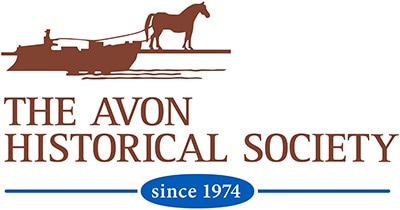Historic Barns
Connecticut’s agricultural heritage is reflected in the iconic barns, silos, and outbuildings that still dot the landscape. Originally a working building to provide practical shelter for storing animals, grain, or tools, many barns are still in use today on small family farms or have been adapted to suit modern purposes. Pleasure farms became popular as traditional subsistence farming became unsustainable, yielding to market forces as larger mid-west farms and supermarkets shipped their produce to this area. Thankfully, the rising popularity of farmers' markets, wineries, and guest stays mean many of these overlooked barns will continue to survive. This eating fresh movement is also spreading in the retail businesses strengthening the idea of buying local. Family-owned supermarkets like Big Y and Shop Rite support farmers by buying their fruits and vegetables. In Avon family farms such as Pickin Patch & Sub Edge Farms, or Riverdale Farms in Simsbury and Bristol's Farm in Canton supply dairy products and fresh produce to area restaurants and other places.
From humble chicken coops to dairy sheds for milking cows to grand equestrian centers, the visible architectural features document the evolution of building techniques and the fluctuating fortunes of farming. From the early, simple Colonial English-style “saltbox” barn, the New England style (entry on the end or under the peak), including the bank barn (the Horse Guards barn is a bank barn) to the distinctive red barns set high on mortar foundations or the “post and beam” construction to more ornate Greek Revival farmhouses, barns offer insights into our agrarian past. In the mid-1800s large tobacco barns with louvered sides were built to allow the newly introduced leaf crop to hang while being air-dried, a practice that continued until the 1970s when the market waned. As wealth and innovation progressed in the mid-19th century ventilators or cupolas added more light and air circulation. These features still form part of the distinctive New England architecture style we are familiar with within this area.
Barns were usually not considered significant; they were undocumented or not listed on Registers for many years so they slowly disappeared from the landscape. As the farming economy deteriorated, barns decayed and fell into disrepair or were demolished as vast tracts of land were sold for development.
In 1972, the National Register of Historic Places designated a section of West Avon as the Pine Grove Historic District. This collection of historic properties are all located within walking distance of each other and includes Sunrise Farm (18th Century); Isaac Woodford Farm (1789); David Rood Farm (1820); Marcus Thompson Farm (1840); Cold Spring Farm (1843) and the Society’s gem, our 1865 one-room Pine Grove Schoolhouse (1865) still on view to the public on Sunday afternoons every summer.
With renewed awareness of the importance of barns, Preservation Connecticut (formerly The Connecticut Trust) commissioned “The Barns Survey” during 2006-2011. To date, over 8,000 barns and outbuildings have been documented. It was a special project involving more than 400 volunteers across the state to document significant, historic barns for their website. A former Avon Historical Society Trustee kindly volunteered to document the Avon barns as part of this comprehensive effort. Her survey includes a photo collection of 45 barns showing how many of them are still in town. All have been included in the State Register of Historic Places. As a sample, click here to read her article about Cold Springs Farm. If you want to view more data, historical narrative and analysis, images gathered, and other barn-related information from the survey, please visit www.connecticutbarns.org.
Preservation Connecticut finished this survey in June 2011, completed its report, and closed the project.
If you own a barn or live near one that you believe should be documented to enable future generations to research Avon’s agrarian heritage, please contact us.


